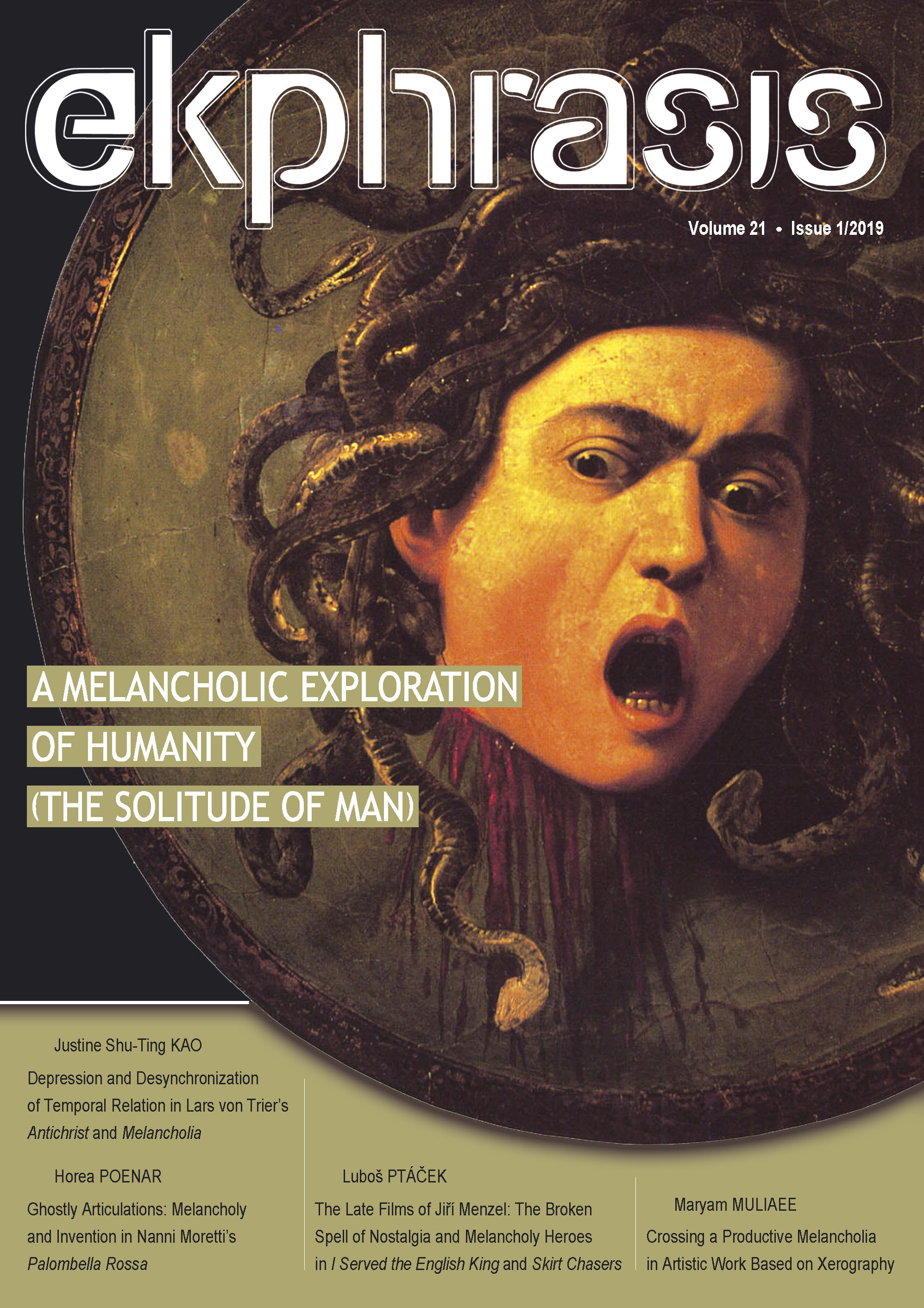Melancholia as Destinerrance. On Resolution
in Discontinuity and an Art That Could Come After Evil
Melancholia as Destinerrance. On Resolution
in Discontinuity and an Art That Could Come After Evil
Author(s): Aura PoenarSubject(s): Fine Arts / Performing Arts, Film / Cinema / Cinematography
Published by: Universitatea Babeş-Bolyai, Facultatea de Teatru si Televiziune
Keywords: melancholia; negative dialectics; destinerrance; assignable nonplace; split subject; Auschwitz; Tristan chord; undecidable; dissonance; silence;
Summary/Abstract: This article is concerned with art’s exploration through melancholia of a world in disaster. We will investigate how art as a form of melancholia – akin to Derrida’s concept of destinerrance – is not only testifying to its limits, but employing its limits, denouncing and performing its border (as in parages). In relation and in dialogue with Adorno’s negative dialectics, we investigate the possibility of non-dialectical art as a non resolving discourse speaking through its melancholia. We will question whether Godard’s famous announcement of the end of cinema, Wagner’s Tristan chord or Parsifal’s much debated ending are a monument to what Adorno would call impossible openness, if they are subjected to closure or, on the contrary, they are rather a melancholic assignable nonplace, both necessary and impossible to find, which enables art to speak of its own impossible closure. How does the end of Wagner’s Ring cycle announce and contain the end of the world in Lars von Trier’s Melancholia? Does The Turin Horse end the world in a melancholia of waiting in vain? Is the continuous flow of water in Marguerite Duras’s film Aurelia Steiner speaking of an impossible arrival? The letter the narrator is reading to us opens up and remains hanging in this liquid and seemingly calm environment. How does filming the waters of the river Seine relate to Bill Viola’s statement that true art cannot separate life from death? Why is Auschwitz a border stone for how we understand and make art today? And how is Penderecki putting the pieces together in deconstructing both silence and sound? By raising all these questions this article reprises Badiou’s interrogation of the ethical possibility of art in a context of reparations prescribed by Adorno to a post-Auschwitz world, through exploring a fundamental non-violence on the part of identity towards what is different from it in order to cause a difference to begin. Can art be a locus of making reparations? Our thesis is that through exploring discontinuity, dissonance or silence a place is being constructed for an art that is possible after Auschwitz.
Journal: Ekphrasis. Images, Cinema, Theory, Media
- Issue Year: 21/2019
- Issue No: 1
- Page Range: 40-58
- Page Count: 18
- Language: English

